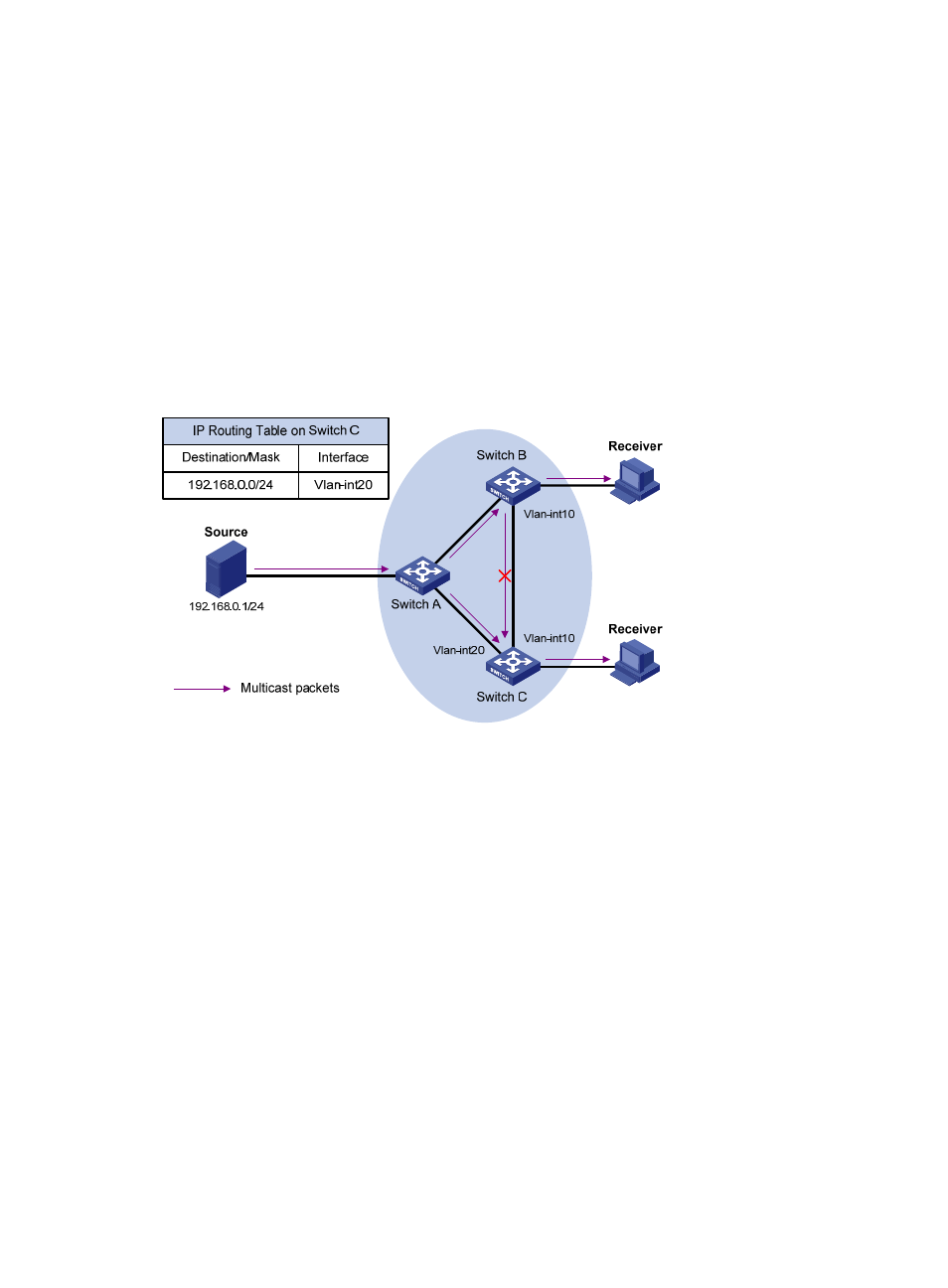Multicast static routes, Rpf route change – H3C Technologies H3C S10500 Series Switches User Manual
Page 93

78
3.
If the corresponding (S, G) entry exists, but the interface that received the packet is not the
incoming interface in the multicast forwarding table, the multicast packet undergoes an RPF check.
○
If the RPF interface is the incoming interface of the (S, G) entry, it indicates that the (S, G) entry
is correct but the packet arrived from a wrong path. The packet will be discarded.
○
If the RPF interface is not the incoming interface, it indicates that the (S, G) entry has expired,
and router replaces the incoming interface with the RPF interface. If the interface on which the
packet arrived is the RPF interface, the router forwards the packet to all the outgoing interfaces.
Otherwise, it discards the packet.
Assume that unicast routes are available in the network, MBGP is not configured, and no multicast static
routes have been configured on Switch C, as shown in
. Multicast packets travel along the SPT
from the multicast source to the receivers. The multicast forwarding table on Switch C contains the (S, G)
entry, with VLAN-interface 20 as the incoming interface.
Figure 26 RPF check process
•
When a multicast packet arrives on interface VLAN-interface 20 of Switch C, because the interface
is the incoming interface of the (S, G) entry, the router forwards the packet to all outgoing
interfaces.
•
When a multicast packet arrives on interface VLAN-interface 10 of Switch C, because the interface
is not the incoming interface of the (S, G) entry, the router performs an RPF check on the packet. The
router searches its unicast routing table and finds that the outgoing interface to Source (the RPF
interface) is VLAN-interface 20. This means the (S, G) entry is correc,t and packet arrived along a
wrong path. The RPF check fails and the packet is discarded.
Multicast static routes
A multicast static route is an important basis for RPF check. Depending on the application environment,
a multicast static route can change an RPF route and create an RPF route.
RPF route change
Typically, the topology structure of a multicast network is the same as that of a unicast network, and
multicast traffic follows the same transmission path as unicast traffic does. You can configure a multicast
static route for a given multicast source to change the RPF route to create a transmission path for multicast
traffic that is different from that for unicast traffic.